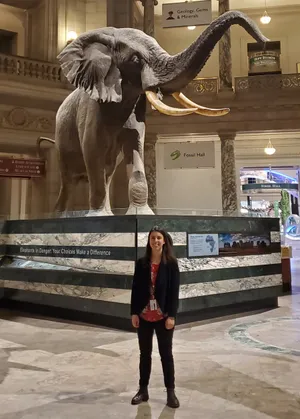NATIONAL MUSEUM OF NATURAL HISTORY
Digitization Allows Public Access to Smithsonian’s Hidden Collections
2.8 millions items in the National Museum of Natural History’s collections went open access on Feb. 25.
/https://tf-cmsv2-smithsonianmag-media.s3.amazonaws.com/blogging/featured/Bumblebees_Tight_Shot.jpg)
Deep inside the walls of the Smithsonian’s National Museum of Natural History, millions of specimens and artifacts are stored away from the public eye for research. On the fifth floor, rows of large, white cabinets hold the museum’s collection of bees.
Like most of the museum’s collections, the bees are only accessible by researchers who make the trip to D.C. or those who request loans of specimens.
“It's what we in the museum industry call ‘dark data,’” Dr. Floyd Shockley, the entomology collections manager, said. “It's data, but you can't see it unless you physically come and pick up the specimen and look at it.”
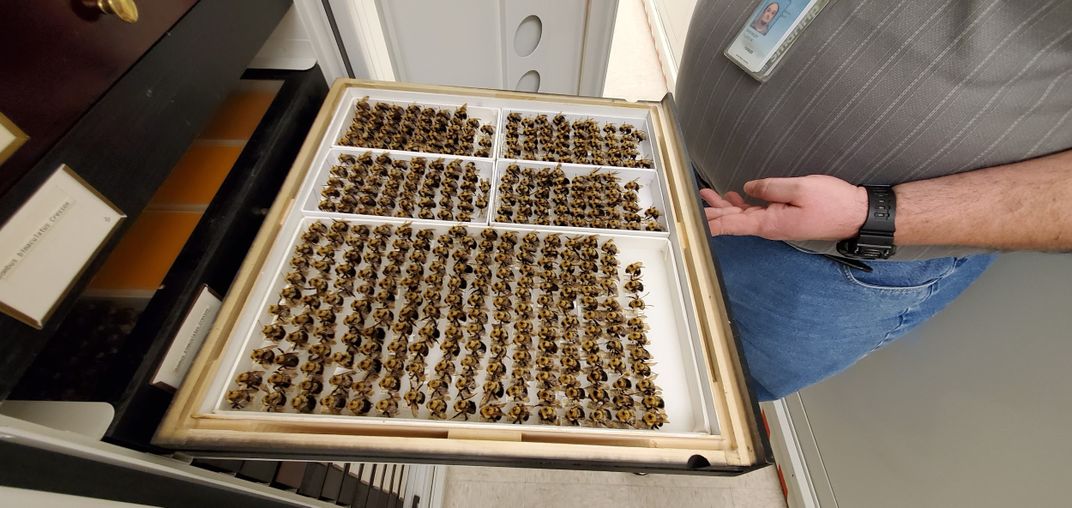
But the museum is working to change that by mass digitizing its bumblebee and carpenter bee specimens. On Feb. 25, the Smithsonian went open access, which gives anyone the ability to freely download photos and data of most of the bees after they are uploaded later this year.
Planning the project
Mass digitization projects like this one involve photographing the specimens and recording their data in large quantities quickly and safely.
Jeanine Nault, one of the Smithsonian’s mass digitization program officers, meticulously planned out every detail before the project began. She figured out what equipment was needed, where the digitization would take place and even set up a mock workspace. She tested out camera settings, making sure even small details would be visible and the colors accurate.
Nault said this project was a continuation of one of the earliest mass digitization projects undertaken by the Digitization Program Office. In 2014, the office digitized 44,000 bumblebees. This pilot project helped the team figure out how best to digitize 3D specimens so future projects would run smoothly.
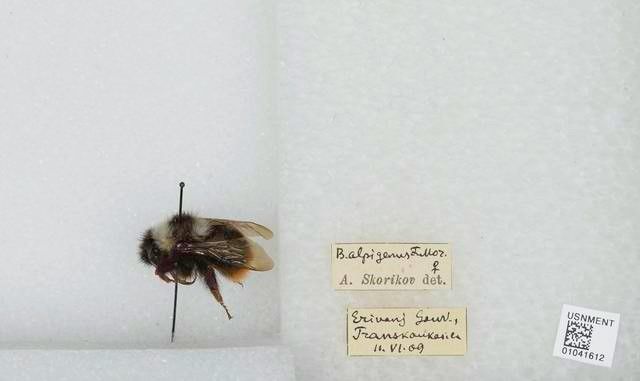
The workspace
Mass digitizing insects is a tedious task. Handlers carefully remove the bees from their drawers, unpin their labels from beneath them and assign them barcodes — unique QR codes that identify each bee. A photographer then takes pictures of the bees with their corresponding information before other handlers repin the labels and return the specimens to their drawers in the order that they were removed.
“It worked like an assembly line,” Shockley said. “Eight people working on the bees made the process quicker and easier.”
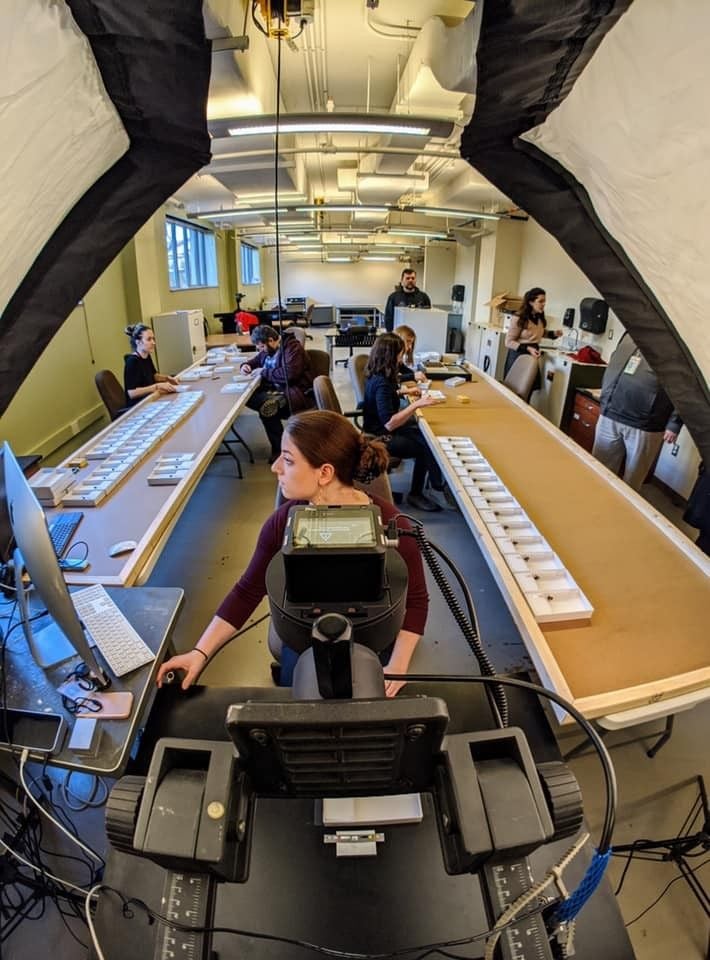
The team started the project in December and had photographed all the bees by late January.
“We digitized over 30,000 specimens within eight weeks” Jessica Bird, the entomology collections information manager, said. “It was really amazing. The target was 900 a day and the rate was around 1,000 a lot of times.”
Before the insects could go back to their cabinets, they were frozen for two days so contaminants or pests like dermestid beetles weren’t accidentally introduced into the collections. Dermestid beetles, or skin beetles, feed on dead insects and would reduce the collections to dust.
Over the next few weeks, the scientific data on the labels will be transcribed and uploaded with the images to the collections website.
Using digital collections
Researchers can use the digital collection to understand where bee species lived in the past and how that changed over time.
“Over time, populations shrink, grow and move,” Shockley said. “The only way that we can spot that is by taking all this data from the collection and studying what those changes in distributions look like.”
Shockley also thinks this digitization project could eventually help contribute to a worldwide database of collections in museums across the world. Like the bees, each specimen would have a unique identification number, so it would be easier to track where it is physically.
“If you were studying endangered species, think about the level of accuracy you would have if you could suddenly have access to every data point of every specimen ever collected of that species in every natural history museum in the world,” he said. “The only way we can do that kind of thing is by making sure that we get our collection available.”
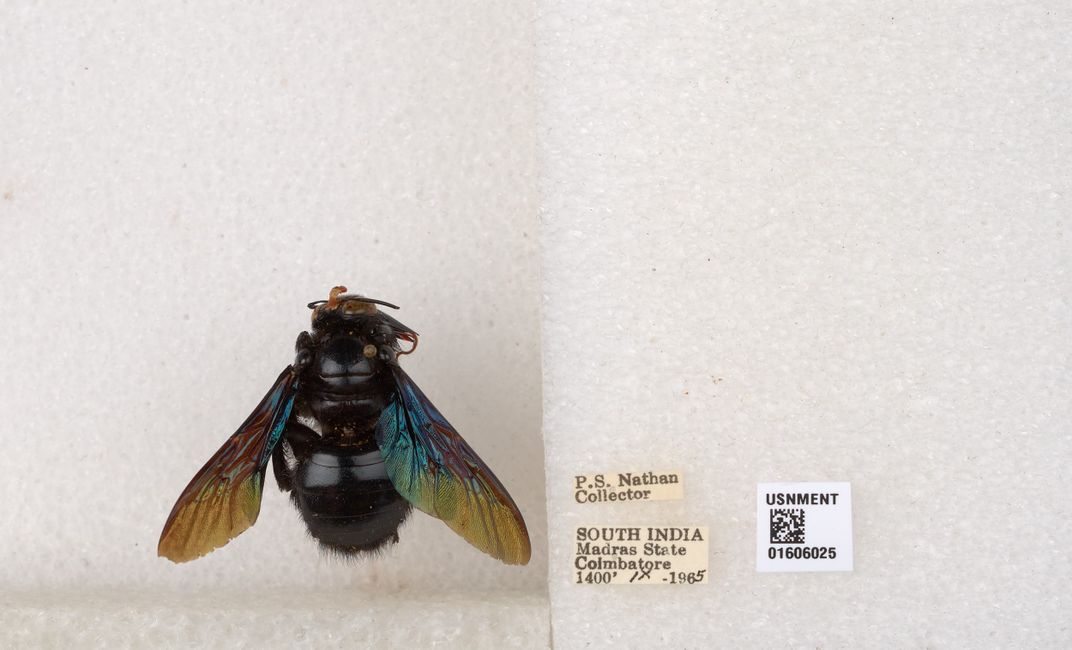
On top of being important for researchers, digitization projects give the museum copies of the data in case something happens to one of its specimens. It also reduces the number of specimens it needs to ship out on loan to researchers.
“If we got a good picture, or more importantly, capture the data, then researchers have everything they need for their research without having to physically borrow the specimen,” Shockley said.
And for the public, almost 2.8 million items in the National Museum of Natural History’s collections went open access on Feb. 25, including most of the bumblebee collections from 2014. This means anyone anywhere can download and use the photos and data. When the rest of the bumblebee and carpenter bees are uploaded, most of them will be released into the public domain as well.
Shockley said he’s looking forward to the next insect digitization project and imagines what the museum could do if all its specimens were digitized.
“If the museum were to digitize its 145 million objects and specimens, you could basically reconstruct the natural world digitally,” he said. “That’s pretty cool.”
Related stories:
Is 3D Technology the Key to PReserving Indigenous Cultures?
3D Technology May Revive This Ancient Hunting Tool

